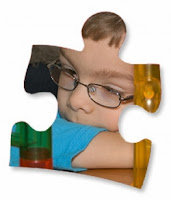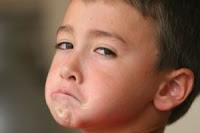"Any tips for toilet training my Aspergers son? It's not been going very well so far. Help!"
Even for the normal child, toilet training is often a difficult skill to master. But for the child with Aspergers or High-Functioning Autism, there are additional factors that may inhibit toilet training. The things that would encourage the average child may not be effective with the "Aspie."
Social motivation is a critical factor in determining "readiness" for toilet training. An Aspergers child may not be motivated by the opportunity to wear “big boy pants.” He may not understand what is expected of him. Following all the steps necessary for toilet training may be difficult for this child. Changes in his routine may also be a challenge.
An Aspergers child may not be aware of the need to use the toilet. The first step in toilet training will be to determine his level of readiness.
Assessment--
1. Establish a positive and meaningful routine around toileting, and collect data about your child's readiness for schedule training or for independent toileting.
2. Use a simple chart to collect the data needed about your child's readiness. On a routine basis, the child is taken to the bathroom for a "quick check" every 30 minutes, and data is recorded on each occasion.
3. Over a period of 1 or 2 weeks, patterns of data begin to emerge:
- Is the child dry for significant periods of time?
- Is there some regularity in his wetting/soiling?
- Does the child show any indication that he/she is aware of being wet/soiled?
- Does the child pause while wetting/soiling?
4. If the answer to all of these questions is no, then it may not be time to toilet train the child.
5. During this trial period, assess other aspects of the process of toilet training:
- Is the child beginning to pick up on the routine involved?
- Does the child have dressing skills?
- Are there any fears associated with the process of toileting?
- What is the child’s attention span?
It may be beneficial to develop a task analysis of the steps of toileting. This can provide a picture of all the skills needed and will also let you see where specific trouble areas may be. The task analysis can be very general or very specific, including everything from entering the bathroom, to flushing the toilet and leaving the bathroom.
Highly Acclaimed Parenting Programs Offered by Online Parent Support, LLC:



.jpg)


